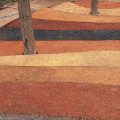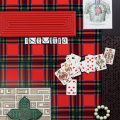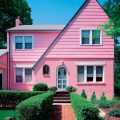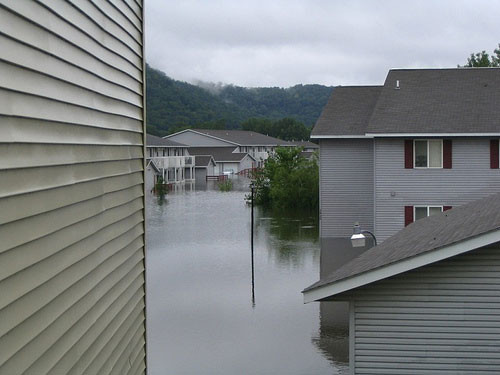 Moisture protectionAt first glance, well madea brick or log wall should reliably protect against moisture, but, alas, this is not the case. Water is an insidious element, it seeps not only through cracks and crevices, but also through the wall material, which is hygroscopic to a certain extent. Therefore, it is necessary to protect this material, the primary function of which, in fact, is to serve as the supporting base of the building. To begin with, let's focus on one non-obvious thing: you should not always blame the waterproofing of the walls if they suddenly become damp. Oddly enough, wall waterproofing can be quite good, while the foundation is absolutely unprotected in this regard. And then - expect trouble, since the foundation usually comes into contact with soil moisture, and it, due to the already mentioned hygroscopicity of wall materials, can penetrate the walls, rising through their capillaries. But what if the waterproofing of the roof is poorly done? Then the walls will be dry until the first rain, and then - that same dampness and the troubles associated with it. Thus, a radical solution to the problem can only be complex, and waterproofing of the walls is the most important part of this complex. If you protect the walls from moisture from below, then first of all you need to do horizontal waterproofing. It is done about 15 centimeters above the level of the blind area and prevents moisture from penetrating through the pores in the wall. At the same time, you can do vertical waterproofing by drilling a series of holes in the wall at a slight angle and filling them with insoluble silicon compounds. In this case, the solution will fill the capillaries in the wall, thereby putting a reliable barrier in the path of soil moisture. The upper part of the load-bearing walls, which is in direct contact with the rafter structure and roof, should also be protected from atmospheric moisture as much as possible. And you also need to protect the outer part of the walls, because they are also hit by rain, and a damp wind blows against them, so sooner or later moisture will definitely find a way in.
Moisture protectionAt first glance, well madea brick or log wall should reliably protect against moisture, but, alas, this is not the case. Water is an insidious element, it seeps not only through cracks and crevices, but also through the wall material, which is hygroscopic to a certain extent. Therefore, it is necessary to protect this material, the primary function of which, in fact, is to serve as the supporting base of the building. To begin with, let's focus on one non-obvious thing: you should not always blame the waterproofing of the walls if they suddenly become damp. Oddly enough, wall waterproofing can be quite good, while the foundation is absolutely unprotected in this regard. And then - expect trouble, since the foundation usually comes into contact with soil moisture, and it, due to the already mentioned hygroscopicity of wall materials, can penetrate the walls, rising through their capillaries. But what if the waterproofing of the roof is poorly done? Then the walls will be dry until the first rain, and then - that same dampness and the troubles associated with it. Thus, a radical solution to the problem can only be complex, and waterproofing of the walls is the most important part of this complex. If you protect the walls from moisture from below, then first of all you need to do horizontal waterproofing. It is done about 15 centimeters above the level of the blind area and prevents moisture from penetrating through the pores in the wall. At the same time, you can do vertical waterproofing by drilling a series of holes in the wall at a slight angle and filling them with insoluble silicon compounds. In this case, the solution will fill the capillaries in the wall, thereby putting a reliable barrier in the path of soil moisture. The upper part of the load-bearing walls, which is in direct contact with the rafter structure and roof, should also be protected from atmospheric moisture as much as possible. And you also need to protect the outer part of the walls, because they are also hit by rain, and a damp wind blows against them, so sooner or later moisture will definitely find a way in.
Methods…
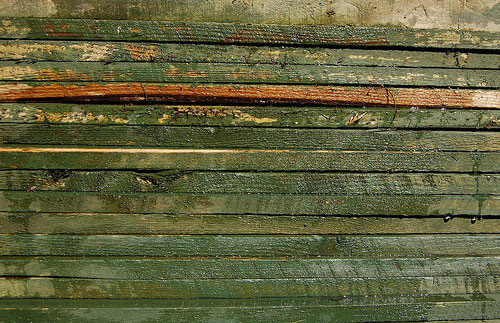 The first line of defense against moisture isвнешняя граница стены, через которую воду пускать весьма нежелательно. Каким образом выстроить здесь оборону? Возможно, применив специальный материал – гидрофобизатор; его функция – предотвращать эффект смачивания стены. Гидрофобизация стен, по сути, похожа на смазывание тела каким-либо жиром перед купанием в холодной воде. При этом кожа фактически не смачивается и вода с легкостью соскальзывает с нее. Если стеновой материал делается гидрофобным, то вода тоже скатывается с него, не проникая внутрь, и все отрицательные последствия, соответственно, исключаются. Обработанные таким образом материалы сохраняют водоотталкивающие свойства: при поверхностной обработке – минимум десять лет, а при глубинной пропитке – в течение всего срока службы постройки. Гидрофобизаторы наносятся на предварительно очищенные поверхности кистью, валиком или распылителем, после чего не больше чем за сутки обеспечивается гидрофобный эффект и вода попросту соскальзывает с такой поверхности. Кроме того, поверхности кирпичных, газобетонных, пенобетонных и т. п. стен можно защитить от влаги, если использовать штукатурную гидроизоляцию. Как следует из названия, ее применяют аналогично штукатурке: наносят на стену шпателем, выравнивают, после чего отделывают поверхность выбранным материалом. Иногда для этих целей используют обычный цемент, который наносят на стену слоем в несколько миллиметров. Однако цемент – весьма относительная преграда для воды, при ее длительном воздействии он может намокнуть. Поэтому для достижения более высокоэффективной гидрозащиты в цемент добавляют церезит или жидкое стекло. Хотя самое удобное – пользоваться готовыми смесями, которые промышленность выпускает в избытке. В их состав входят минеральные вяжущие вещества, наполнители, а также полимерные и минеральные добавки. Применение для этих целей полимеров – естественно, поскольку они (в отличие от большинства строительных материалов) практически не взаимодействуют с водой. Специальные составы из полимеров могут наноситься на стену с последующим покрытием фасадной краской или пористой штукатуркой. Перед использованием гидроизоляционных смесей необходимо предварительно подготовить основание: очистить от грязи, пыли, жира, масел или краски, заделать неровности, после чего приготовить раствор и приступить к работе. А еще применяют специальные влаговыводящие штукатурки – нанесенные на стены, они вытягивают из них воду и испаряют ее.Коль скоро речь зашла об эшелонированной обороне, то вторым эшелоном будет сам стеновой материал. Допустим, вода все-таки добралась до него, проникнув в бреши, незаполненные гидрофобизатором или гидроизолирующей штукатуркой. В таком случае, казалось бы, кампания проиграна, и влага начнет проникать вглубь, чтобы вскоре проявиться на внутренней поверхности мокрым пятном. Но так будет, если не защитить материал с помощью проникающей гидроизоляции. Если же она сделана, то даже прямой контакт с водой не страшен такой стене. Проникающая гидроизоляция, о которой мы писали не раз, заполняет поры, пустоты, . Такой способ защиты от влаги ставит на ее пути практически неодолимую преграду, и даже если дом будет затоплен во время паводка, вода проникнет через окна, двери, но не через стены. Такая гидроизоляция представляет собой смесь из высококачественного портландцемента, кварцевого песка и химически активных добавок, которые запечатывают поры стенового материала. Перед тем как наносить покрытие, поверхность основания должна быть хорошо очищена от пыли, масляных пятен. Швы кирпичной кладки расшиваются на глубину пять миллиметров, после чего заделываются цементным раствором с добавлением гидроизоляционной смеси. Далее состав смешивается с водой в нужной пропорции, перемешивается до получения однородного пластичного раствора и наносится на поверхность, которую требуется защитить от воздействия влаги.
The first line of defense against moisture isвнешняя граница стены, через которую воду пускать весьма нежелательно. Каким образом выстроить здесь оборону? Возможно, применив специальный материал – гидрофобизатор; его функция – предотвращать эффект смачивания стены. Гидрофобизация стен, по сути, похожа на смазывание тела каким-либо жиром перед купанием в холодной воде. При этом кожа фактически не смачивается и вода с легкостью соскальзывает с нее. Если стеновой материал делается гидрофобным, то вода тоже скатывается с него, не проникая внутрь, и все отрицательные последствия, соответственно, исключаются. Обработанные таким образом материалы сохраняют водоотталкивающие свойства: при поверхностной обработке – минимум десять лет, а при глубинной пропитке – в течение всего срока службы постройки. Гидрофобизаторы наносятся на предварительно очищенные поверхности кистью, валиком или распылителем, после чего не больше чем за сутки обеспечивается гидрофобный эффект и вода попросту соскальзывает с такой поверхности. Кроме того, поверхности кирпичных, газобетонных, пенобетонных и т. п. стен можно защитить от влаги, если использовать штукатурную гидроизоляцию. Как следует из названия, ее применяют аналогично штукатурке: наносят на стену шпателем, выравнивают, после чего отделывают поверхность выбранным материалом. Иногда для этих целей используют обычный цемент, который наносят на стену слоем в несколько миллиметров. Однако цемент – весьма относительная преграда для воды, при ее длительном воздействии он может намокнуть. Поэтому для достижения более высокоэффективной гидрозащиты в цемент добавляют церезит или жидкое стекло. Хотя самое удобное – пользоваться готовыми смесями, которые промышленность выпускает в избытке. В их состав входят минеральные вяжущие вещества, наполнители, а также полимерные и минеральные добавки. Применение для этих целей полимеров – естественно, поскольку они (в отличие от большинства строительных материалов) практически не взаимодействуют с водой. Специальные составы из полимеров могут наноситься на стену с последующим покрытием фасадной краской или пористой штукатуркой. Перед использованием гидроизоляционных смесей необходимо предварительно подготовить основание: очистить от грязи, пыли, жира, масел или краски, заделать неровности, после чего приготовить раствор и приступить к работе. А еще применяют специальные влаговыводящие штукатурки – нанесенные на стены, они вытягивают из них воду и испаряют ее.Коль скоро речь зашла об эшелонированной обороне, то вторым эшелоном будет сам стеновой материал. Допустим, вода все-таки добралась до него, проникнув в бреши, незаполненные гидрофобизатором или гидроизолирующей штукатуркой. В таком случае, казалось бы, кампания проиграна, и влага начнет проникать вглубь, чтобы вскоре проявиться на внутренней поверхности мокрым пятном. Но так будет, если не защитить материал с помощью проникающей гидроизоляции. Если же она сделана, то даже прямой контакт с водой не страшен такой стене. Проникающая гидроизоляция, о которой мы писали не раз, заполняет поры, пустоты, . Такой способ защиты от влаги ставит на ее пути практически неодолимую преграду, и даже если дом будет затоплен во время паводка, вода проникнет через окна, двери, но не через стены. Такая гидроизоляция представляет собой смесь из высококачественного портландцемента, кварцевого песка и химически активных добавок, которые запечатывают поры стенового материала. Перед тем как наносить покрытие, поверхность основания должна быть хорошо очищена от пыли, масляных пятен. Швы кирпичной кладки расшиваются на глубину пять миллиметров, после чего заделываются цементным раствором с добавлением гидроизоляционной смеси. Далее состав смешивается с водой в нужной пропорции, перемешивается до получения однородного пластичного раствора и наносится на поверхность, которую требуется защитить от воздействия влаги. 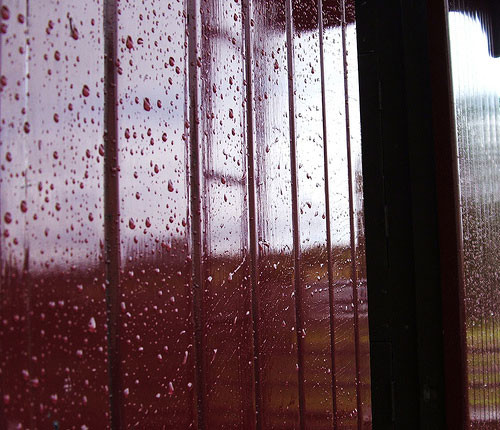 However, these are not the only methods of defense.Recent scientific and technical achievements have made it possible to radically combat the harmful water element. People have been trying to combat dampness on walls for a long time, but they have not yet come up with effective methods: any of them requires significant costs, and most importantly, they do not solve the problem completely and do not provide any guarantees for the future. But recently, when a unique device appeared on the domestic market, the name of which is translated (in free translation) as a "barrier to water" - "Aquastop", the situation has changed. Is it possible to get rid of ground moisture? Until now, it was believed that it was not. Moisture was a given that had to be put up with. As it turned out, however, it is possible to use the electrophysical principle and, having charged the soil accordingly, redirect the movement of ground moisture into its deeper layers. Based on this principle, our compatriot, academician V. V. Kubalik, developed a device in Austria called "Aquastop", which fights not the consequences of water expansion, but the root cause, i.e. eliminates contact of groundwater with the elements of the house structure. At the same time, it is much more convenient to use than, say, to coat the foundation with bitumen waterproofing. "Aquastop" is an electronic device the size of a portable receiver, it does not interfere with the operation of other electronic devices in the house at all and does not involve any construction work. To connect it, you only need a regular 220-volt household outlet.
However, these are not the only methods of defense.Recent scientific and technical achievements have made it possible to radically combat the harmful water element. People have been trying to combat dampness on walls for a long time, but they have not yet come up with effective methods: any of them requires significant costs, and most importantly, they do not solve the problem completely and do not provide any guarantees for the future. But recently, when a unique device appeared on the domestic market, the name of which is translated (in free translation) as a "barrier to water" - "Aquastop", the situation has changed. Is it possible to get rid of ground moisture? Until now, it was believed that it was not. Moisture was a given that had to be put up with. As it turned out, however, it is possible to use the electrophysical principle and, having charged the soil accordingly, redirect the movement of ground moisture into its deeper layers. Based on this principle, our compatriot, academician V. V. Kubalik, developed a device in Austria called "Aquastop", which fights not the consequences of water expansion, but the root cause, i.e. eliminates contact of groundwater with the elements of the house structure. At the same time, it is much more convenient to use than, say, to coat the foundation with bitumen waterproofing. "Aquastop" is an electronic device the size of a portable receiver, it does not interfere with the operation of other electronic devices in the house at all and does not involve any construction work. To connect it, you only need a regular 220-volt household outlet.
…and materials
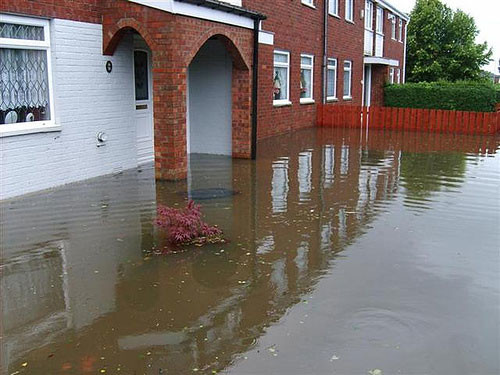 But even if you have such a device, you shouldn’tcompletely abandon the use of waterproofing materials. Many different materials are used to protect walls from moisture. For example, the German dry mixture "Barralastic" is used as a coating waterproofing. There is also its domestic analogue, it is called "Gidroplast". Created on the basis of cement and special polymers, these mixtures form an elastic, frost-resistant waterproof coating with good adhesion. The coating is applied with a regular brush, in two or three layers. Another dry mixture from Germany is called "Bauta". The coating made from it tolerates vibrations, frost, temperature changes well and withstands the pressure of a five-meter water column. The mixture "Osmoflex" is supplied from Italy, it is good for waterproofing structures subject to vibration and deformation, since such a coating can withstand cracks opening up to one millimeter. Among the penetrating waterproofing options, we can note the domestic product of the Kalmatron brand, used to protect concrete, brick and stone materials from moisture. The Lakhta mixture, which also effectively protects against moisture, has a good reputation. The market also offers the Aquatron mixture for protecting concrete structures, as well as the Gidrotex-V mixture, which can be used to seal cracks up to 0.5 millimeters wide. It is worth noting the Italian-made Osmosil mixture, the American Penetron material and the special penetrating waterproofing paint of the Sta-Dri masonry paint brand, also produced in the USA. When applied to a porous concrete surface, this paint forms a dense protective coating that serves as a reliable waterproofing barrier. Among water repellents, the organosilicon liquid "Siloxyl" on a water basis has proven itself well. Creating reliable protection from water, "Siloxyl" maintains vapor and air permeability of materials. The organosilicon water repellent "Aquasil" is characterized by increased efficiency and ease of use. With high-quality treatment of the wall surface with "Aquasil" the water-repellent effect lasts up to 30 years. The water-repellent composition "Gidroshit-super" is characterized by increased durability and is absolutely environmentally safe. It is applied with a regular brush or roller, in two layers. Universal impregnations GSK-1 and GSK-2 are applied in the same way, giving the materials water-repellent, fire-retardant and antiseptic properties. The Germans produce a water-repellent compound "Taffsil", intended for processing facades, floors, brick, tiles, concrete, that is, almost all materials used in construction. In addition, Germany supplies our market with water repellents Ceresit CO-81 and Epasit Ip 237; among other things, they are used as water-repellent primers to protect against capillary moisture. The Italian solvent impregnation "Dejumical" has an anti-salt effect, and also prevents the development of mold, fungi and microorganisms.
But even if you have such a device, you shouldn’tcompletely abandon the use of waterproofing materials. Many different materials are used to protect walls from moisture. For example, the German dry mixture "Barralastic" is used as a coating waterproofing. There is also its domestic analogue, it is called "Gidroplast". Created on the basis of cement and special polymers, these mixtures form an elastic, frost-resistant waterproof coating with good adhesion. The coating is applied with a regular brush, in two or three layers. Another dry mixture from Germany is called "Bauta". The coating made from it tolerates vibrations, frost, temperature changes well and withstands the pressure of a five-meter water column. The mixture "Osmoflex" is supplied from Italy, it is good for waterproofing structures subject to vibration and deformation, since such a coating can withstand cracks opening up to one millimeter. Among the penetrating waterproofing options, we can note the domestic product of the Kalmatron brand, used to protect concrete, brick and stone materials from moisture. The Lakhta mixture, which also effectively protects against moisture, has a good reputation. The market also offers the Aquatron mixture for protecting concrete structures, as well as the Gidrotex-V mixture, which can be used to seal cracks up to 0.5 millimeters wide. It is worth noting the Italian-made Osmosil mixture, the American Penetron material and the special penetrating waterproofing paint of the Sta-Dri masonry paint brand, also produced in the USA. When applied to a porous concrete surface, this paint forms a dense protective coating that serves as a reliable waterproofing barrier. Among water repellents, the organosilicon liquid "Siloxyl" on a water basis has proven itself well. Creating reliable protection from water, "Siloxyl" maintains vapor and air permeability of materials. The organosilicon water repellent "Aquasil" is characterized by increased efficiency and ease of use. With high-quality treatment of the wall surface with "Aquasil" the water-repellent effect lasts up to 30 years. The water-repellent composition "Gidroshit-super" is characterized by increased durability and is absolutely environmentally safe. It is applied with a regular brush or roller, in two layers. Universal impregnations GSK-1 and GSK-2 are applied in the same way, giving the materials water-repellent, fire-retardant and antiseptic properties. The Germans produce a water-repellent compound "Taffsil", intended for processing facades, floors, brick, tiles, concrete, that is, almost all materials used in construction. In addition, Germany supplies our market with water repellents Ceresit CO-81 and Epasit Ip 237; among other things, they are used as water-repellent primers to protect against capillary moisture. The Italian solvent impregnation "Dejumical" has an anti-salt effect, and also prevents the development of mold, fungi and microorganisms.







